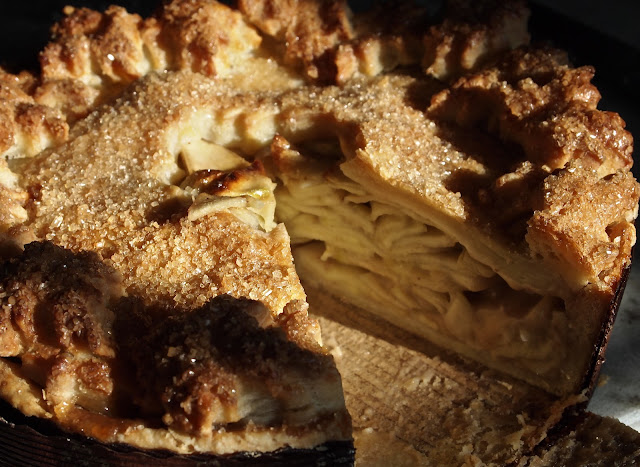Batty Battenberg to Say Farewell to a Batty Year
 |
| The Batty Battenberg on the left and a traditional on the right. |
Is it just me or was 2012 a weird year? And by "weird," I mean craptastic.
I won't compile a mealy mouthed list of whines. I know darn well that my life is replete with blessings. A tough year, in retrospect, is lined with the moments that can make for a more meaningful existence. All this I know.
I'm still going to celebrate kicking an "annus horribilis" out the back door with cake and champagne, with every hope that the next will be an improvement.
And in the event 2013 isn't any better, I can always drown myself in a piece of this glory of an almond cake because I've got extra that I'm hiding in the freezer for emergencies.
A BATTY BATTENBERG for a BATTY YEAR
Traditionally, a Battenberg cake is a marzipan covered almond sponge. You slice it open to reveal four squares of alternating pink and yellow cake blocks. It's named in commemoration of the marriage between Prince Louis of Battenberg (who later changed his family name to Mountbatten, for those keeping score) and Queen Victoria's granddaughter, Princess Victoria of Hesse and by Rhine.
Germans might not have been well liked in England at the time but their artistry with pastry was very well appreciated. The German prince's court pastry chefs brought their marzipan and brightly colored sponge batters and made plenty of friends at the nuptials with their sweet magic.
INGREDIENTS
For the cake
8 ounces unsalted butter, room temperature (2 sticks)
1 cup granulated sugar
4 large eggs, at room temperature
1 1/2 cups cake flour (sifted before measured)
1/2 cup almond flour (I only had sliced, skin on, almonds and just ground them and sifted a few times before measuring)
1 teaspoon baking powder
1 teaspoon salt
1/2 teaspoon almond extract
1/2 teaspoon vanilla bean paste (you can substitute vanilla extract)
2 drops red food coloring
To finish
2 tubes Odense marzipan or 14 ounces of almond flavored fondant (see my recipe), which I used
1/4 cup smooth apricot jam (I use Lingonberry because I always have it. See why here.)
PROCEDURE
For the cake
•Preheat the oven to 350º.
•Line an 8" x 12" baking pan (I used a hotel pan) with parchment paper. Fold the parchment in half lengthwise to create a separator in the pan for the batters. Spray the parchment with non-stick cooking spray. Set aside.
•Sift together the cake flour, almond flour, baking powder and salt. Whisk together with a for a minute. Set aside.
•Add the eggs, one at a time, making sure each egg is completely incorporated into the batter and scraping down the bottom and sides of the bowl before adding the next.
•Add the extracts and mix until just combined.
•Add the dry ingredients and combine on low until evenly distributed.
•Divide the batter evenly between two bowls (about 15 1/2 ounces in each) and add 2 drops of red food coloring to one of the batters, stirring until the color is even.
 |
| Since I was lazy and used skin on almond slices (and vanilla bean paste with it's' glorious vanilla bean flecks) the batter is very spotty. This goes away with the bake. No worries. |
•Gently spread the batter in the prepared baking tin and bake for 30 to 35 minutes or until the cake gently springs back when poked.
•Allow to cool completely.
•Trim the top of each cake to make sure they are level. Measure the side of the trimmed cake (should be 1 to 1 1/2" deep) and using that measurement, mark the cakes lengthwise and cut strips (three strips from each cake) that measure 1 x 1 x 12 inches (or 1 1/2 x 1 1/2 by 12, depending on how deep your cake layer is).
•Spread a layer of jam on top of the plain layer and press the pink layer atop. Spread the sides of the cake with jam. Spread a layer of jam atop a pink layer and press a plain layer atop. Spread the sides of the cake with jam. Press the top layers together. Cover with plastic wrap tightly and freeze for 20 minutes to an hour. At this point, you've assembled a traditional Battenberg and can chill until set and cover at this stage without any more fuss but covering with marzipan. Or you can give yourself more work and continue on...
•You'll have two strips of both colors left. I cut them evenly in half and make a small Battenberg that I keep in the freezer for emergencies.
•Cut the cake in half diagonally and then again in half diagonally from the other corner.
 |
| You see, this is what a Battenberg looks like when sliced into. At this stage, you would just cover with marzipan. If you want to continue on, slice away! |
•Carefully spread each triangular layer with more jam and then fit together the pieces to create pinwheel patterns. Press the cake together firmly and wrap with plastic wrap. Freeze for 20 minutes.
•Knead the two marzipan blocks together until smooth. Roll the marzipan between to sheets of parchment into a 12" x 8 " rectangle. Place the cake on one end of marzipan and carefully lift the other end of the marzipan to cover the rest of the cake, gently pressing at the seam and then trimming with a sharp knife.
•Using the back of a knife, make a diamond patter into the top of the cake. Top with decorative sugar pearls if you've got them.




